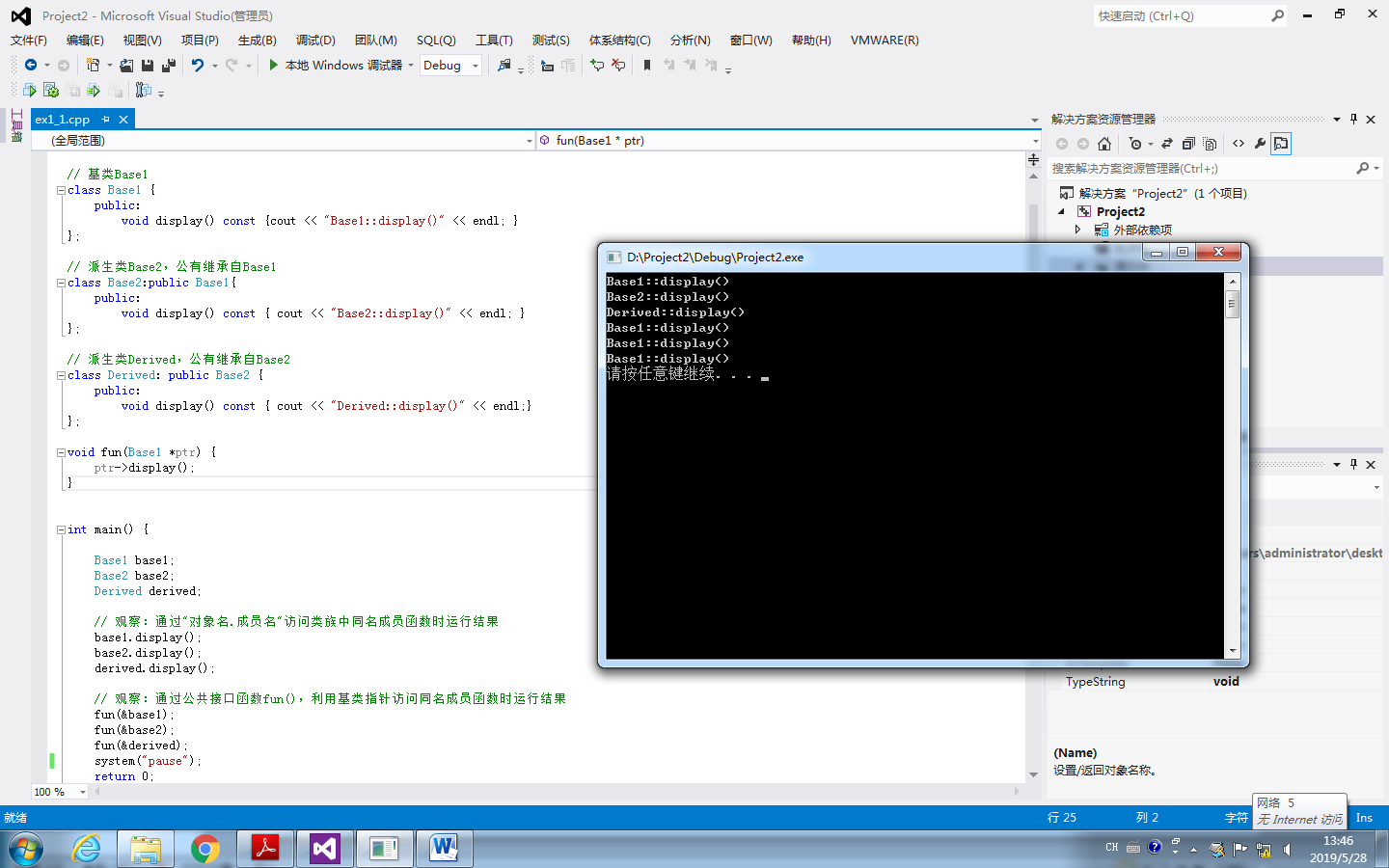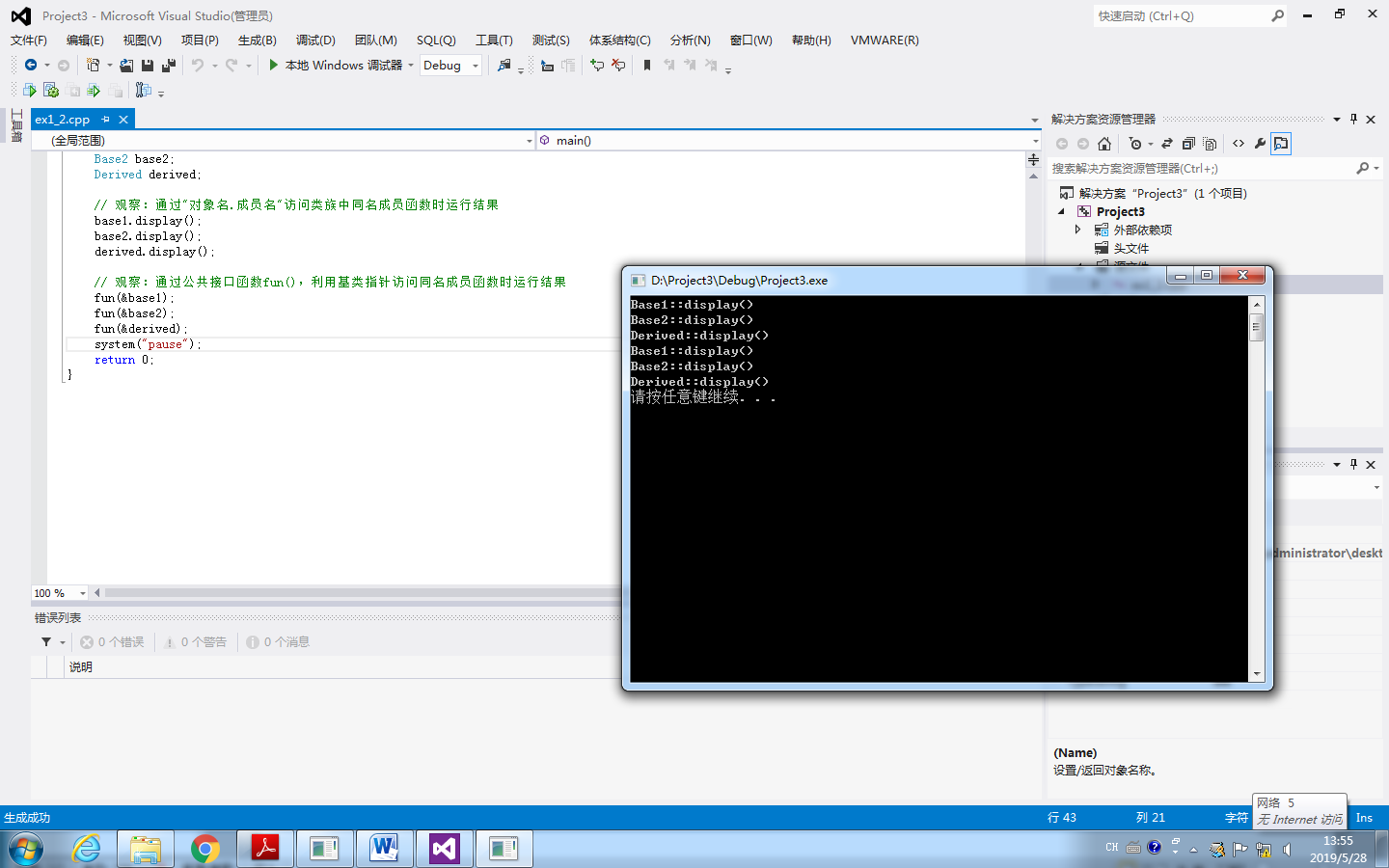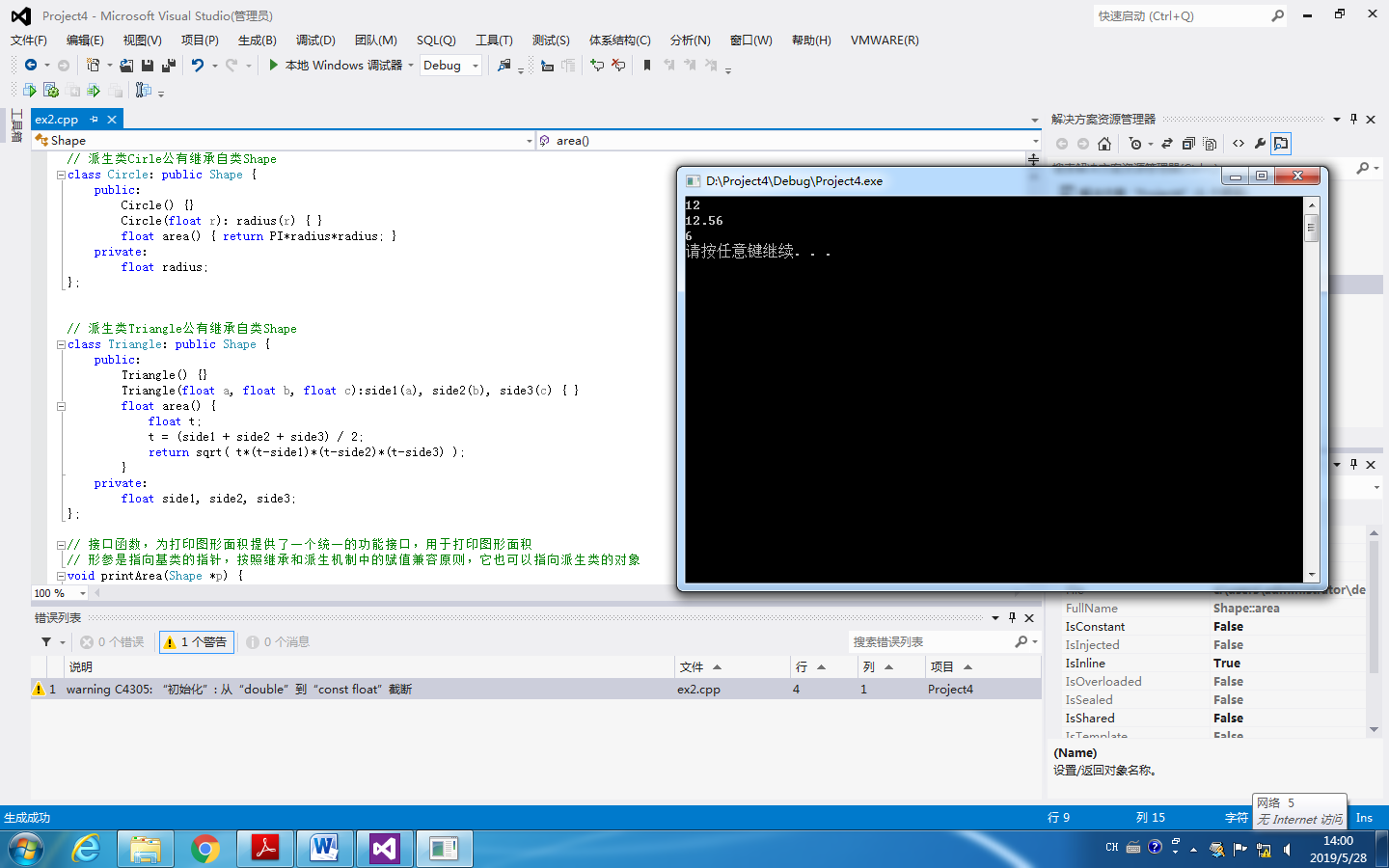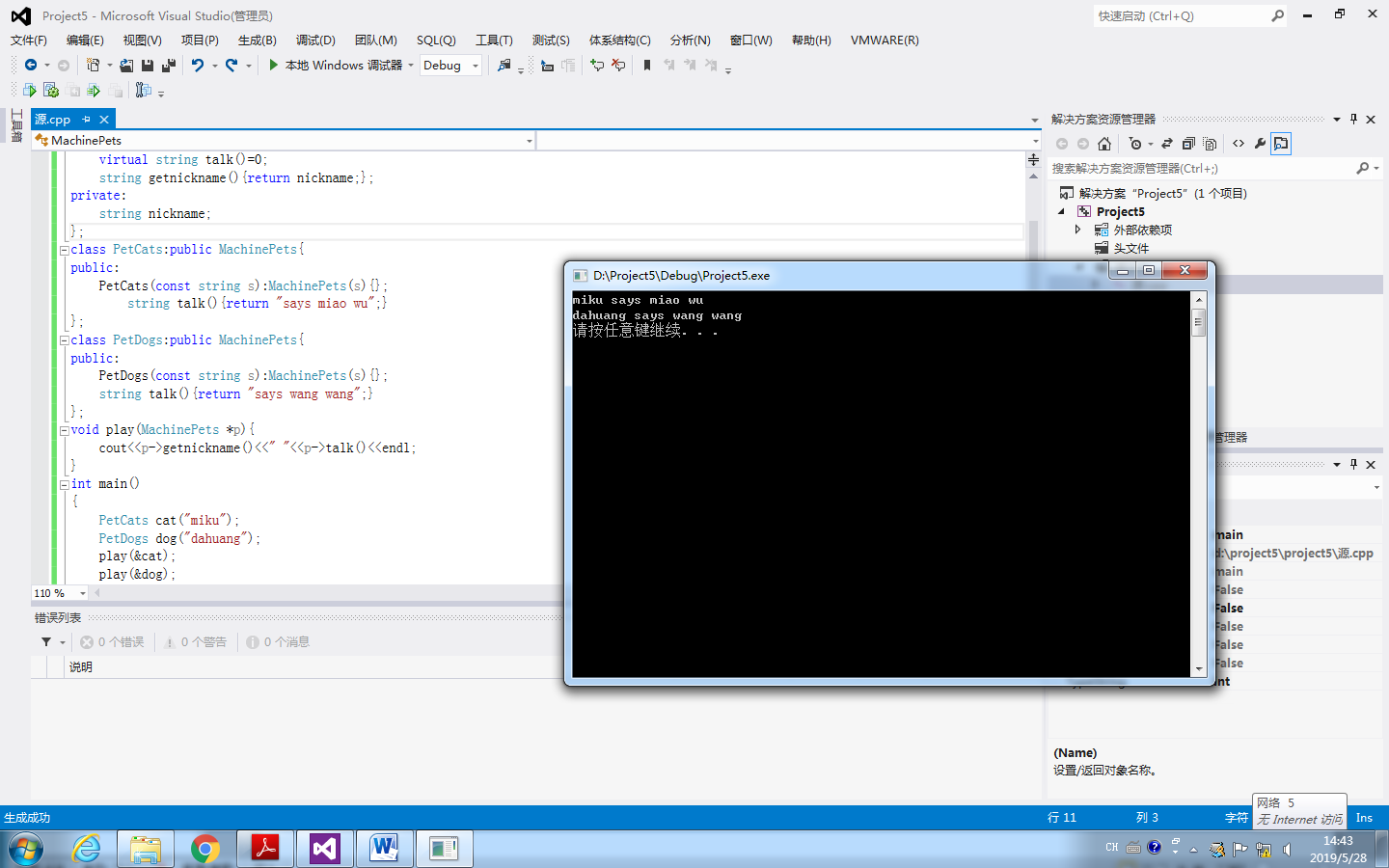实验5电子宠物
#include <iostream>
using namespace std;
// 基类Base1
class Base1 {
public:
void display() const {cout << "Base1::display()" << endl; }
};
// 派生类Base2,公有继承自Base1
class Base2:public Base1{
public:
void display() const { cout << "Base2::display()" << endl; }
};
// 派生类Derived,公有继承自Base2
class Derived: public Base2 {
public:
void display() const { cout << "Derived::display()" << endl;}
};
void fun(Base1 *ptr) {
ptr->display();
}
int main() {
Base1 base1;
Base2 base2;
Derived derived;
// 观察:通过"对象名.成员名"访问类族中同名成员函数时运行结果
base1.display();
base2.display();
derived.display();
// 观察:通过公共接口函数fun(),利用基类指针访问同名成员函数时运行结果
fun(&base1);
fun(&base2);
fun(&derived);
system("pause");
return 0;
}

// 示例:多层继承,使用虚函数
#include <iostream>
using namespace std;
// 基类Base1
class Base1 {
public:
virtual void display() const {cout << "Base1::display()" << endl; } // 相较于ex1_1.cpp, 基类Base1中成员函数前添加了关键字virtual
};
// 派生类Base2,公有继承自Base1
class Base2:public Base1{
public:
void display() const { cout << "Base2::display()" << endl; }
};
// 派生类Derived,公有继承自Base2
class Derived: public Base2 {
public:
void display() const { cout << "Derived::display()" << endl;}
};
void fun(Base1 *ptr) {
ptr->display();
}
int main() {
Base1 base1;
Base2 base2;
Derived derived;
// 观察:通过"对象名.成员名"访问类族中同名成员函数时运行结果
base1.display();
base2.display();
derived.display();
// 观察:通过公共接口函数fun(),利用基类指针访问同名成员函数时运行结果
fun(&base1);
fun(&base2);
fun(&derived);
return 0;
}

#include <iostream> #include <cmath> using namespace std; const float PI = 3.14; //抽象类Shape class Shape { public: virtual float area()=0; // 纯虚函数 }; // 派生类Rectangle供有继承自类Shape class Rectangle: public Shape { public: Rectangle() {} Rectangle(float l, float w): length(l), width(w) { } float area() { return length*width; } private: float length, width; }; // 派生类Cirle公有继承自类Shape class Circle: public Shape { public: Circle() {} Circle(float r): radius(r) { } float area() { return PI*radius*radius; } private: float radius; }; // 派生类Triangle公有继承自类Shape class Triangle: public Shape { public: Triangle() {} Triangle(float a, float b, float c):side1(a), side2(b), side3(c) { } float area() { float t; t = (side1 + side2 + side3) / 2; return sqrt( t*(t-side1)*(t-side2)*(t-side3) ); } private: float side1, side2, side3; }; // 接口函数,为打印图形面积提供了一个统一的功能接口,用于打印图形面积 // 形参是指向基类的指针,按照继承和派生机制中的赋值兼容原则,它也可以指向派生类的对象 void printArea(Shape *p) { cout << p->area() << endl; } int main() { Rectangle rect(3,4); Circle cc(2); Triangle tt(3,4,5); printArea(&rect); printArea(&cc); printArea(&tt); system("pause"); return 0; }

#include<iostream> #include<string> using namespace std; class MachinePets{ public: MachinePets(const string s):nickname(s){}; virtual string talk()=0; string getnickname(){return nickname;}; private: string nickname; }; class PetCats:public MachinePets{ public: PetCats(const string s):MachinePets(s){}; string talk(){return "says miao wu";} }; class PetDogs:public MachinePets{ public: PetDogs(const string s):MachinePets(s){}; string talk(){return "says wang wang";} }; void play(MachinePets *p){ cout<<p->getnickname()<<" "<<p->talk()<<endl; } int main() { PetCats cat("miku"); PetDogs dog("dahuang"); play(&cat); play(&dog); system("pause"); return 0; }

1、尝试并验证了virtual关键字的使用。
2、进一步巩固了对类的理解,加深了记忆。




